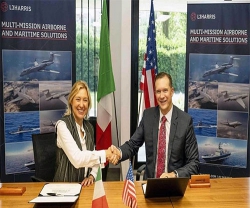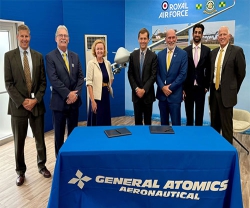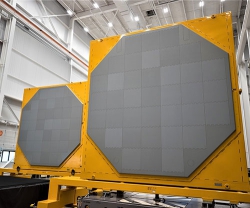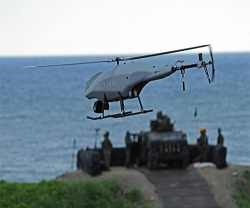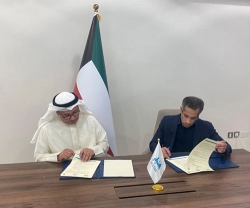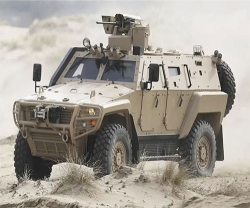General Atomics Aeronautical Systems, Inc. (GA-ASI), a global leader in Remotely Piloted Aircraft (RPA), announced they are working with the Hellenic Air Force (HAF) in Greece to conduct a series of demonstration flights for European countries in December.
Flights will base out of the HAF’s site in Larissa and use a GA-ASI MQ-9 Guardian RPA to showcase maritime surveillance capabilities, as well as a GA-ASI-developed Detect and Avoid (DAA) system that enables RPA to fly safely in civil airspace alongside manned aircraft.
“We appreciate the HAF’s support in helping showcase the maritime surveillance and civil airspace integration capabilities of our unmanned aircraft in Europe. The demand for affordable, long-endurance airborne surveillance of the seas surrounding Europe is growing,” said Linden Blue, CEO, GA-ASI.
The demonstration configuration is based on the MQ-9 systems operated by the U.S. Department of Homeland Security (DHS), in support of its maritime surveillance roles.
The DAA system consists of an air-to-air radar and processor integrated with Traffic Alert and Collision Avoidance System (TCAS II) and Automatic Dependent Surveillance-Broadcast (ADS-B). The DAA system from GA-ASI is operational in the U.S. The system’s collision-avoidance radar provides an essential safety feature for integrating unmanned aircraft into civil airspace.
The MQ-9 system will also demonstrate a multi-mode maritime surface-search radar with Inverse Synthetic Aperture Radar (ISAR) mode, an Automatic Identification System (AIS) receiver, and High-Definition/Full-Motion Video sensor equipped with optical and infrared cameras. This sensor suite enables real-time detection and identification of surface vessels over thousands of square nautical miles.
The featured Raytheon SeaVue surface-search radar system provides automatic tracking of maritime targets and correlation of AIS transmitters with radar detection.
GA-ASI is also partnering with SES, a leading satellite communications (SATCOM) operator and managed services provider, with over 70 satellites in Geostationary Orbit (GEO) and Medium Earth Orbit (MEO). SES will provide the GEO satellite connectivity that enables the MQ-9 to operate securely with a high capacity datalink, enabling real-time transmission of sensor data from the aircraft, and extending its effective operational range far beyond that of “line-of-sight” datalinks.
“With our global satellite fleet, SES has been supporting the critical needs of GA-ASI and their government customers who have operated these aircraft for close to two decades. We are proud to support this demonstration effort for the Hellenic Air Force as part of our long-standing relationship with General Atomics,” said Nicole Robinson, Senior Vice President, Global Government at SES Networks.
General Atomics Aeronautical Systems, Inc. (GA-ASI), an affiliate of General Atomics, is a leading designer and manufacturer of proven, reliable Remotely Piloted Aircraft (RPA) systems, radars, and electro-optic and related mission systems, including the Predator® RPA series and the Lynx® Multi-mode Radar.
With 6 million flight hours, GA-ASI provides long-endurance, mission-capable aircraft with integrated sensor and data link systems required to deliver persistent flight that enables situational awareness and rapid strike. The company also produces a variety of ground control stations and sensor control/image analysis software, offers pilot training and support services, and develops meta-material antennas.



